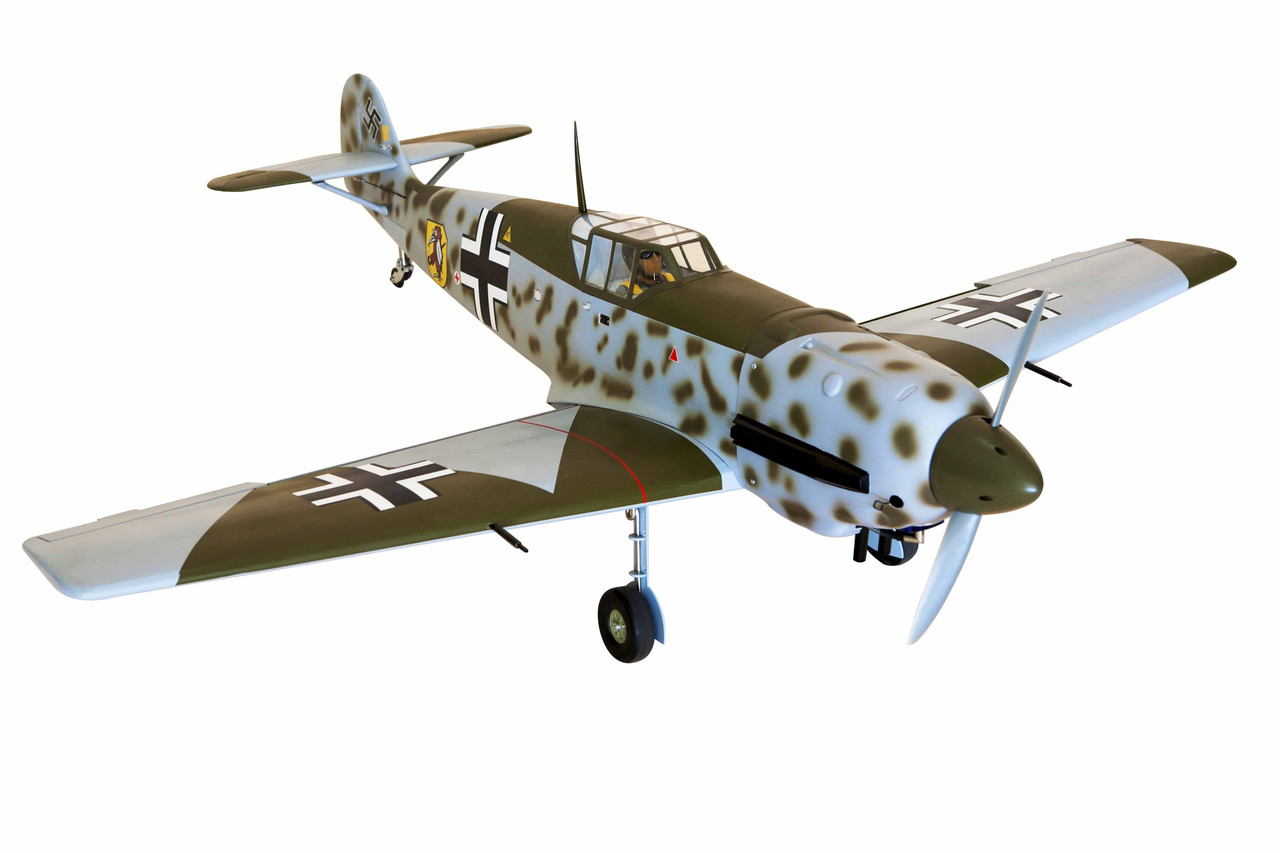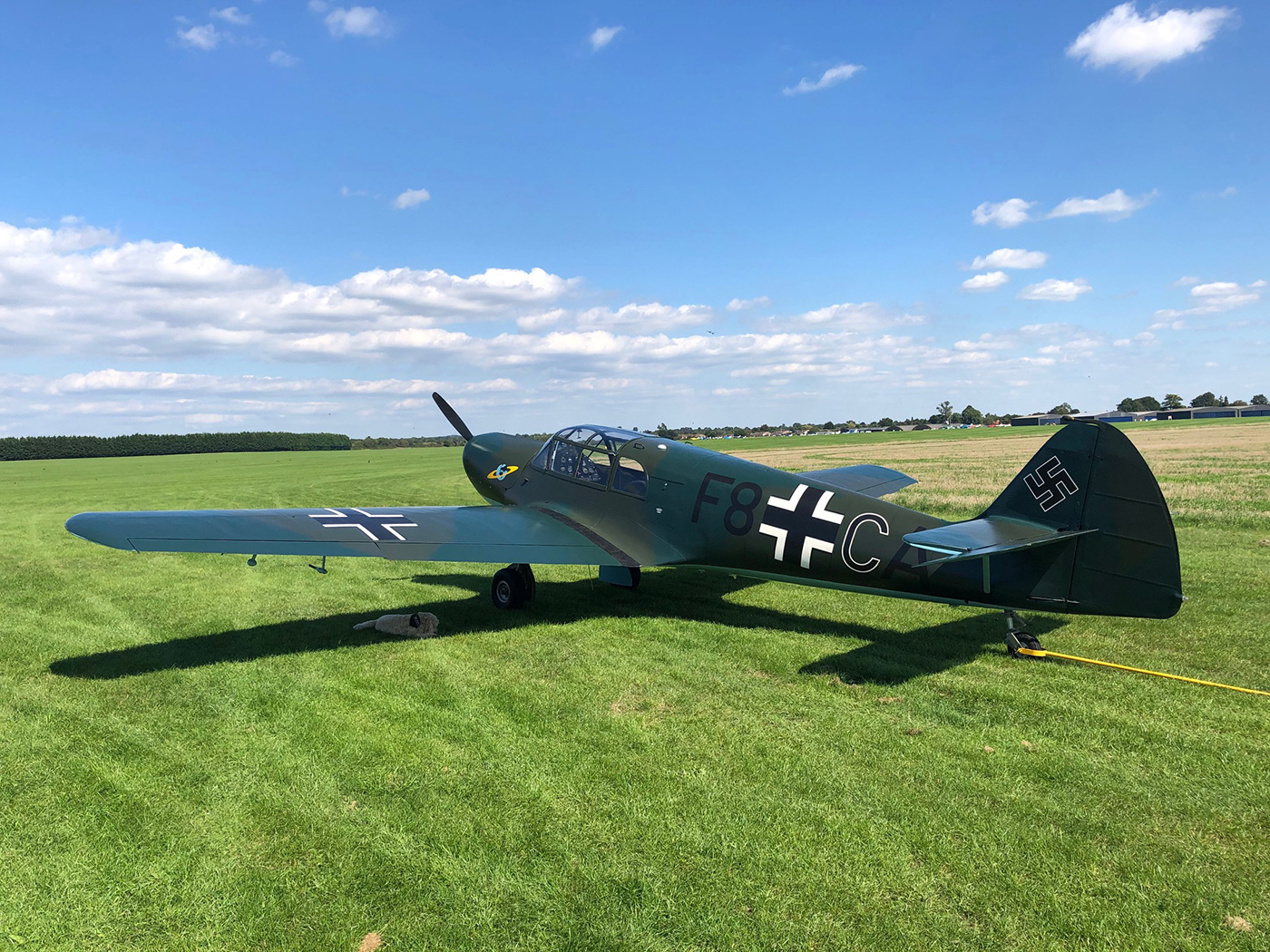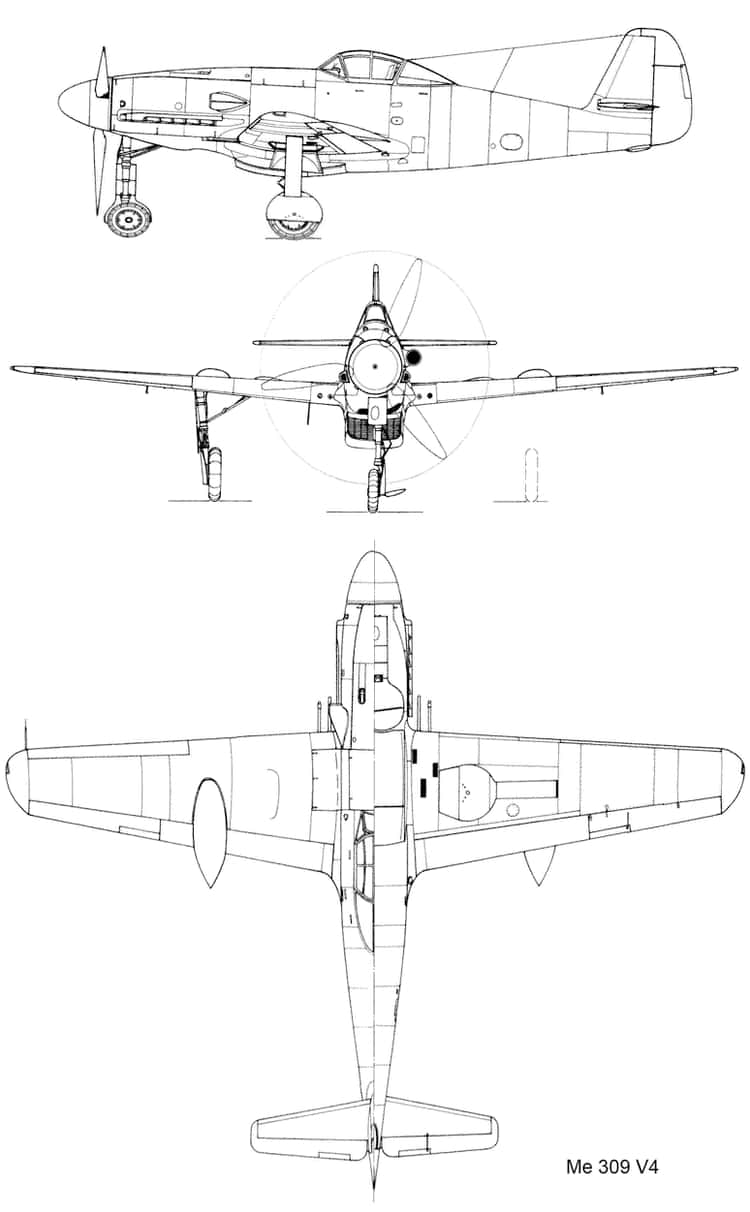Messerschmitt Aircraft List - Various models of Bf109 were deployed to fill different roles and counter advances in Allied aircraft. It remained in production after the end of the war thanks to the Czech firm Avia, whose factory survived the war.
By the time production ended in the mid-1950s, over 35,000 Bf109s had taken to the skies. The heaviest weapon carried by an Me410 was the 50mm gun mounted beneath the fuselage of the Me104A-1/U4 model. This was devastating against enemy bombers but also nerve-wracking for the crew using it, thanks to its powerful recoil.
Messerschmitt Aircraft List

Like most of the superweapons introduced by the Nazis, the Me 262 Swallow had little impact on the war. Although impressive in design and capabilities, it was an aircraft that was rushed off the drawing board too soon in a desperate attempt to turn the tide of war.
Stripped down and carrying no weapons to reduce weight and improve speed, the plane flew at about 30,000 feet at more than 400 miles per hour. Few aircraft—German, British, American or otherwise—could keep up with it.
However, the biggest shortfall was the technology itself. Although the Me 262 was considered a delight to handle by experienced pilots, Luftwaffe airmen had to adjust to a new style of flying. It was so fast that many had difficulty adjusting to this new aircraft.
Plus, by the time it was introduced in sufficient numbers at the end of the war, Germany had a serious lack of pilots with the requisite skills to perform in combat. The achievements of the Bf110 led to the development of a successor, which started out as the Me210.
Despite test flights in which it stalled and proved unstable, the Me210 was put into production–only for this to be halted after 200 were built and more Bf110s being made instead. As Wall began his return trip to base in Italy, navigator Albert Lobban noticed an enemy aircraft approaching quickly from the rear.
He was puzzled by the interceptor because it had no propellers and left two trails of exhaust behind it. Bf109s were widely used in the early stages of WWII, including the invasions of Poland and France and the Battle of Britain.
The model E had a superior engine and weapons to the British planes it initially faced, which gave German pilots an edge in the air and made it infamous among its opponents. Wall pushed the throttles of the Mosquito forward all the way and began evasive action.
For the next 15 minutes, the RAF crew played a dangerous game of cat and mouse with the much-faster mystery aircraft, which made three attack passes as it zoomed by. Each time, Wall deftly maneuvered his plane to avoid being hit by four 30-mm cannons.
Suddenly, Wall and Lobban heard two loud bangs. As the men prepared to bail out, they opened the cabin door and discovered what had happened: a two-door hatch assembly had blown off the bottom of the plane during the extremely tight G-force turns needed to evade the enemy aircraft.
The crew stayed with the Mosquito and managed to make an emergency landing back at the base near Fermo, Italy. The Me262 had a limited impact on the Second World War, but a huge impact on the development of military technology.
It inspired designers across the world, shaping the design of jet fighters as they became the dominant force in aerial warfare. When it entered service in July 1944, the Me163 was twice as fast as anything the Allies could field against it.

Small and agile, it was terrifying to face. Such high speeds initially proved problematic, as pilots had little time to fire before passing their targets. Swooping attacks from above proved to be the most effective tactic.
The Me262's development was delayed first by the German Command's focus on proven technology, and then by the intervention of the Allies, who bombed the factories producing it in August 1943. Problems with the performance and reliability of the engines slowed down production, so it was
over two years from the first test flight before the plane entered service in July 1944. Equipped with 24 rockets and four 30mm cannons, the Me262 was deadly against enemy bombers, but its impact was limited by the difficulties of getting enough of them into the air.
Although over 1,400 were made, fewer than 300 went into action. Lack of fuel, spare parts, and trained pilots kept some on the ground. Others were destroyed by Allied bombers before they could take flight. About 1,400 Me 262s were manufactured in the latter stages of World War II.
However, it is estimated that only 300 saw combat. By the end of 1944 and through 1945, the Allied assault was so severe that the German jet was incapable of making much of a difference in the war effort.
"There is no question that the plane's performance was absolutely superior to any propeller-driven aircraft of the era by a significant factor," Spencer said. “It was a really well-armed aircraft and could cause lots of damage to American bombers.

Fortunately for the Allies, it was a case of too little too late. The Me 262 was not a significant factor in the outcome of World War II.” The most famous German plane of the war, the Bf109, was created using features from a civilian plane, the Bf108.
What had previously been used to power a four-seater touring plane now powered a one-seater fighter. Despite its great speed advantage, the Me 262 was not as maneuverable as top-of-the-line piston fighters and it had a tendency to stall due to a tricky compressor.
The jet engines burned out quickly and were not that reliable. In addition, they also produced a great deal of smoke, leaving a noticeable exhaust trail. This made it easier for Allied pilots to track and then attack as the Swallows were landing—a moment when the German jets were particularly vulnerable.
© 2023 Smithsonian Magazine Privacy Statement Cookie Policy Terms of Use Advertising Notice Your Privacy Rights Cookie Settings Although its rocket made the Me163 deadly in combat, it could not be fired for long. The volatile fuel ran out after only seven and a half minutes of powered flight, after which the plane glided defenseless back to the ground.
It was therefore only effective in a short-range air defense role. A high-performance rocket-powered plane, the Me163 was a truly radical design. Aside from its powerful high-tech engines, it had an unusual body shape and was one of the first planes to have swept wings.
It was sometimes equipped with powerful experimental weapons, such as the SG 500 Jagdfaust, a set of vertical firing tubes triggered by the shadow of a bomber passing over the plane. Upon entering service in 1937, the Bf109 soon proved its worth.

That November, one broke the world speed record for landplanes by flying at 379.38 mph. Bf109s went into action with the Condor Legion, German forces fighting in the Spanish Civil War. This provided pilots and engineers with more experience in operating the plane.
Designed around the same time as the Bf109, the Bf110 was a very different beast. Instead of being a dedicated interceptor, it was a combination of heavy fighter and light high-speed bomber. Its range and firepower would allow it to protect heavier bombers during runs into enemy airspace.
Like the Bf110, the Me410 could be used as a light bomber or heavy fighter. Entering service in January 1943, it was first used in nighttime bombing raids against Great Britain, and then to take out Allied bombers in the Mediterranean.
David Kindy | | READ MORE This jet was donated to the Smithsonian in 1950 by the U.S. Air Force. In 1978, the National Air and Space Museum began an extensive restoration project to bring the Me 262 back to the same condition as when it served with the famous JG 7 (Fighter Wing 7), complete with unit insignia and victory markings.
Still, the Me 262 was a major influence on what was to come. The Americans and British, who were also developing jet aircraft, used captured Swallows to enhance their own programs. Some of the design features incorporated from the Me 262 included the swept wing, wing slots, underslung engine nacelle and heavy cannon armament mounted in the nose.
Due to mounting losses, it was largely withdrawn from daytime service to become a night fighter. Once airborne radar was added, it became a deadly defender of Germany against nighttime raids. Its heavy weapons took down hundreds of Allied bombers.

One pilot alone, Major Heinz-Wolfgang Schnaufer, claimed to have achieved 121 kills while flying a Bf110. Although the two RAF crew members didn't know it at the time, they had just encountered the latest weapons advancement of Nazi Germany: the Me 262 Swallow.
The first operational jet fighter in history had engaged in its first air-to-air combat mission of World War II. Fortunately, the British fliers lived to tell the story. The National Air and Space Museum has an Me 262 in its collection that is slated to go on display at the museum's Udvar-Hazy Center in Chantilly, Virginia, but no date has yet been announced.
The jet was captured in 1945 by a special U.S. Army Air Force team led by Col. Harold Watson. Known as Watson's Whizzers, this unit was on the lookout for advanced technology to help the American aviation program.
“The Me 262 was an incredible leap forward in technology,” says Alex Spencer, curator at the Smithsonian's National Air and Space Museum. “It represents a new beginning in fighter aircraft, so it is historic in that sense.
But it had certain drawbacks.” During the 1930s and 1940s, Messerschmitt made some of the most advanced and effective fighter planes in German service. They played an important part in the Second World War and in advancing technology in aerial warfare.
Following its early success, production increased, and 100 Bf110s per month were built in 1940. But the plane had a big problem: its lack of maneuverability made it vulnerable to advanced Allied fighters like the Spitfire and Hurricane.
Built by Messerschmitt, the jet plane was a formidable weapon. With its swept-wing design, it looked unlike any other fighter and was the fastest aircraft of its era. The Swallow was powered by two Juno 004B jet engines and could achieve top speeds in excess of 540 miles per hour—at least 100 miles per hour faster than the era's premier fighter, the P-51 Mustang.
“Pilots had to learn how to fly again,” Spencer says. “The speed of this aircraft threw their timing off completely. In piston planes, pilots were used to fire at a certain range. With the jets, they were traveling so fast they passed that range very quickly."
messerschmitt aircraft ww2, messerschmitt helicopter, messerschmitt aircraft company, messerschmitt company, messerschmitt bf 109, messerschmitt jet, messerschmitt airplane, german messerschmitt
